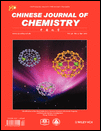Synthesis of Aqueous CdTe Nanocrystals with High Efficient Blue-Green Emission of Exciton
Abstract
As one of the most popular nanocrystals (NCs), aqueous CdTe NCs have very weak green emission under conventional synthesis conditions. In this work, we report the first example of blue-emitting CdTe NCs directly synthesized in aqueous solution by slowing down the growth rate after nucleation. The key for the synthesis is the optimization of NC growth conditions, namely pH range of 7.5 to 8.5, TGA/Cd ratio of 3.6, Cd/Te ratio of 10, and Te concentration of 2×10−5 mol/L, to get a slow growth rate after nucleation. The as-prepared blue-emitting CdTe NCs have small size (as small as 1.9 nm) and bright emission [with 4% photoluminescence quantum yield (PL QY) at 486 nm and 17% PLQY at 500 nm]. Transmission electron microscopy (TEM) images of the as-prepared CdTe show monodispersed NCs which exhibit cubic zinc blend structure. Moreover, time-resolved PL decay and X-ray photoelectron spectroscopy (XPS) results show the as-prepared NCs have better surface modification by ligand, which makes these luminescent small CdTe NCs have higher photoluminescence quantum yield, compared with NCs synthesized under conventional conditions.




